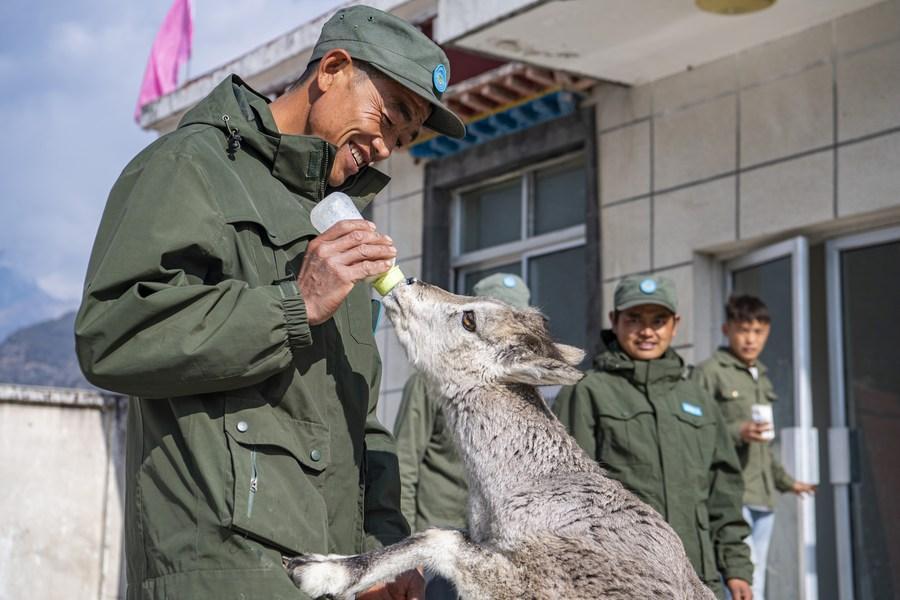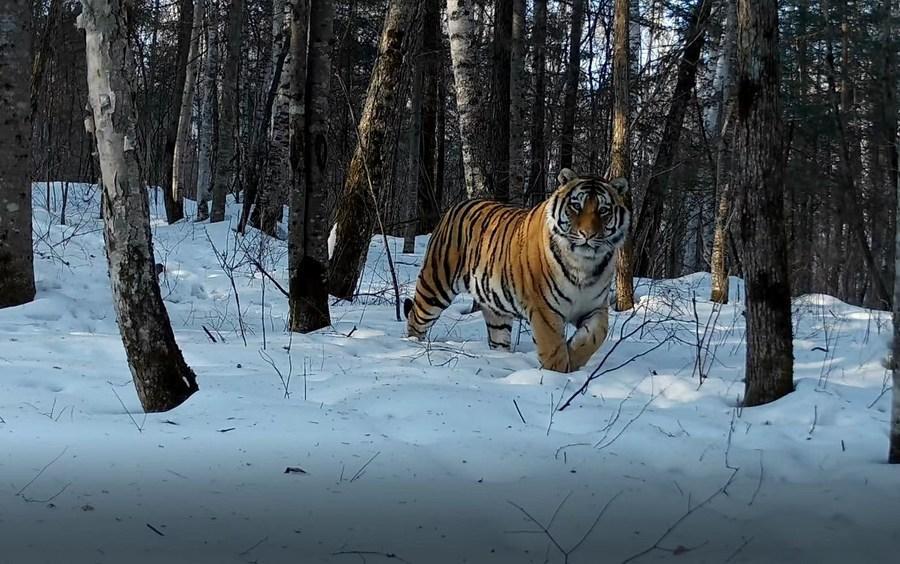Xinhua | May 23, 2023
CONSERVATION WITH HEART
While some residents are trying to live in harmony with wild animals, some others have changed their way of making a living, from damaging the environment to protecting it.
In Gyirong County, a core area of Qomolangma National Nature Reserve in southwest China's Tibet Autonomous Region, former logger and hunter Migmar has become a wild animal rescuer in the reserve on the China-Nepal border with Mount Qomolangma, the world's highest peak at 8,848.86 meters at its core.
He and his seven colleagues take turns patrolling every day. Since the establishment of the wildlife rescue station in 2019, they have rescued 17 wild animals, including those under China's first-class national protection, like a snow leopard.

Migmar, a former logger and hunter who has become a wild animal rescuer, feeds a rescued bharal at the wildlife rescue station of Qomolangma National Nature Reserve, southwest China's Tibet Autonomous Region, March 14, 2023. (Xinhua/Sun Fei)
Last year, he took care of an injured red muntjac attacked by a beast. He learned to bandage the deer and clean its wounds, and six months later, he released it into the wild.
"Animals don't talk, but I can feel their trust. We have the responsibility to protect them," said Migmar, 44.
In northeast China's Jilin Province, the forest farm where Zhao Yan worked to produce timber has become part of a national park for the protection of tigers and leopards.
In the Northeast China Tiger and Leopard National Park, which spans an area of over 1.4 million hectares in Jilin and Heilongjiang, Zhao patrols more than 200 days a year, installing and checking infrared cameras and surveying the living conditions of wild animals.
"I'm not an expert, but a long time of fieldwork has given me abundant data on wildlife," said Zhao, now deputy director of the monitoring center for scientific research of the national park administration's Hunchun branch.

This undated photo taken with an infrared monitoring camera shows a wild Siberian tiger in Tianqiaoling forest area, northeast China's Jilin Province. (Xinhua)
The latest data show that the population of wild Siberian tigers in the park has exceeded 50, while the figure was 27 around 2017. Meanwhile, the number of Amur leopards in the park has increased from 42 in 2017 to more than 60.
Zhao said the comeback of the giant cats has shown that the ecological chain is restoring, and their protection efforts have paid off.
"I hope wild animals can live at ease, with humans and wildlife coexisting in harmony," he said.

